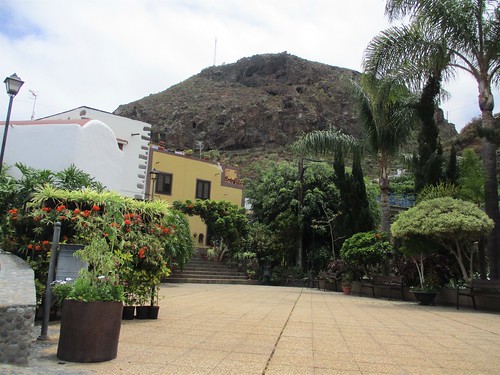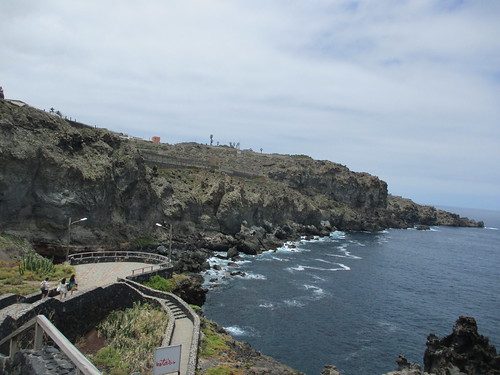
Hemmed in by the sacred mountain Fortaleza and a 9.000 year old black lava trail down to the sea, San Juan de la Rambla has had to dig deep to express itself. The result is a defiant and colourful municipality in the north of Tenerife.

The TF 5 road linking Icod de Los Vinos to Puerto de la Cruz delivered me from my TITSA bus, close ro one of several old concrete tunnels perched above the coast. Looking up it was a little dark and fornoding, especially taking the mini tunnel under the busy mainroad, but within minutes I was marvelling at the beauty in the old village of San Juan de la Rambla. The entire municipality boasts just under 5,000 inhabitants.


 The bright colours of the buildings and the well maintained flower borders showed a sense of pride at work, and plenty of tradition. A calvaro made a sturdy home for the religious crosses and just beyond, a small neat plaza led to some age weary old houses. Despite their peeling paint, they had a certain nobility about them. and a few scattered clothes washing troughs were another link to the past.
The bright colours of the buildings and the well maintained flower borders showed a sense of pride at work, and plenty of tradition. A calvaro made a sturdy home for the religious crosses and just beyond, a small neat plaza led to some age weary old houses. Despite their peeling paint, they had a certain nobility about them. and a few scattered clothes washing troughs were another link to the past.




Local rock dating back 2 million years had been quarried on a small scale in the past and the work had taken its toll on many younger workers. Ornaments and even parts of the nearby cemetary were adorned with locally crafted work, some of the extracted ore was even transported to South America. A monument paid tribute to the hard and dangerous quarry work.



The village hasn´t sat still since its industrial past. A newer, low level housing development sloped down to the Charco La Laja rock pool via a reinforced series of paths and ample warnings of times and rides ro avoid. On this sunny afternoon, the sparkling water had attracted a small crowd of swimmers and anglers. High up above the popular dipping point, a small spring trickled water down to the sea, and views both ways along the coast showed a series of rugged coves.


Heading back up, I swerved along and past several welcoming bars and cafes before finding the church and plaza of San Juan (John the Baptist) with its very detailed clock face. Striding up to my original access point, I couldn´t help imagine how horrific the record rainfall floods of 1826 must have been as water swept down off the mountain. Work was underway to widen the entry point to the village and the closed Tourist Information office had plenty of good information and maps on disply outside. A couple of walks caught my eyes and will draw me back to check out a route from up the mountain and down through the Barranco Ruiz.